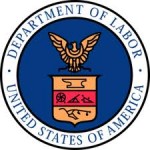- Home
- News
- Features
- Topics
- Labor
- Management
- Opinions/Blogs
- Tools & Resources
Home » Archives by category » Topic Categories » Benefits & Compensation

College Graduates Starting Salaries Class Of 2020 Up Despite The Pandemic
BETHLEHEM, PA — College graduate starting salaries for the Class of 2020 college graduates rose 2.5 percent to $55,260 compared with the Class of 2019, despite the pandemic, according to a new report from the National Association of Colleges and Employers (NACE). NACE’s Summer 2021 Salary Survey shows a gain of 8.5% percent from the […]

CEO pay 351 times more than the typical worker CEO compensation soars while millions were jobless due to the pandemic-driven recession in 2020. CEO compensation at the top 350 U.S. firms grew 18.9% to $24.2 million on average, according to a new EPI analysis. Meanwhile, typical worker compensation rose 3.9% in 2020. But this wage growth is overstated: high job loss among low-wage workers skewed the average wage higher. […]
Continue reading …Minimum Wage Lost 21% Of Its Value Since Congress Last Raised It In 2009
28/07/2021 Comments Off on Minimum Wage Lost 21% Of Its Value Since Congress Last Raised It In 2009
By Ben Zipperer, Working Economics Blog, Economic Policy Institute After the longest period in history without an increase, the federal minimum wage today is worth 21% less than 12 years ago — and 34% less than in 1968. Saturday marked 12 years since the last federal minimum wage increase on July 24, 2009, the longest […]
Continue reading …If the Minimum Wage Grew As Much As A Wall Street Bonus Since 1985, It Would Be $44 Today
22/07/2021 Comments Off on If the Minimum Wage Grew As Much As A Wall Street Bonus Since 1985, It Would Be $44 Today
The 2020 bonus pool for 182,100 securities industry employees could pay for more than 1 million jobs at a $15 minimum wage for a year. March 29, 2021By Sarah Anderson Originally in Inequality.org While low-wage workers are still waiting for a raise in the minimum wage, Wall Street employees enjoyed a 10 percent bump in […]
Continue reading …Oklahoma’s Top Court: Companies Can’t Set Own Rules For Injured Workers
21/09/2016 Comments Off on Oklahoma’s Top Court: Companies Can’t Set Own Rules For Injured Workers
By Michael Grabell ProPublica, Sept. 13, 2016 — A national campaign to rewrite state laws and allow businesses to decide how to care for their injured workers suffered a significant setback Sept. 13, 2016, when the Oklahoma Supreme Court ruled that Oklahoma’s version of the law is unconstitutional. The 2013 legislation gave Oklahoma employers the ability […]
Continue reading …Making Financial Decisions When You Lose Your Job
27/02/2015 Comments Off on Making Financial Decisions When You Lose Your Job
By TARA SIEGEL BERNARD — About 1.7 million people lose their jobs every month, creating a hugely stressful situation and requiring potentially life-altering choices. Beyond the emotional toll, many individuals agonize over potentially life-altering financial decisions, including how best to manage any money they may be going out the door with. Source: The New York Times – The […]
Continue reading …Walmart Workers – With Raises For Some More Hours Is Next Goal
25/02/2015 Comments Off on Walmart Workers – With Raises For Some More Hours Is Next Goal
By HIROKO TABUCHI — Even with the wage increases the chain recently announced, Walmart workers often do not get enough hours to make ends meet, leaving them in a precarious financial state. Read more about Walmart workers at the source: The New York Times – The New American Job Newsfeed What raises mean for Walmart Workers – From […]
Continue reading …Expatriate Workers – The 50 Most Expensive Cities Worldwide
19/12/2014 Comments Off on Expatriate Workers – The 50 Most Expensive Cities Worldwide
Caracas, Venezuela, is simultaneously the world’s most expensive and the cheapest city for expatriate workers – depending on the exchange rate you use, according to the latest Cost of Living survey by ECA International. ECA International is a leading provider of knowledge, information and technology for the management and assignment of employees around the world. […]
Continue reading …Real Average Hourly Earnings Up 0.6% In November
17/12/2014 Comments Off on Real Average Hourly Earnings Up 0.6% In November
Real average hourly earnings rose 0.6% in November, seasonally adjusted, according to the Bureau of Labor Statistics. Average hourly earnings increased 0.4% and the CPI-U decreased 0.3%. Real average weekly earnings increased 0.9% during the month. Source: Real Earnings [subscribe2]
Continue reading …




